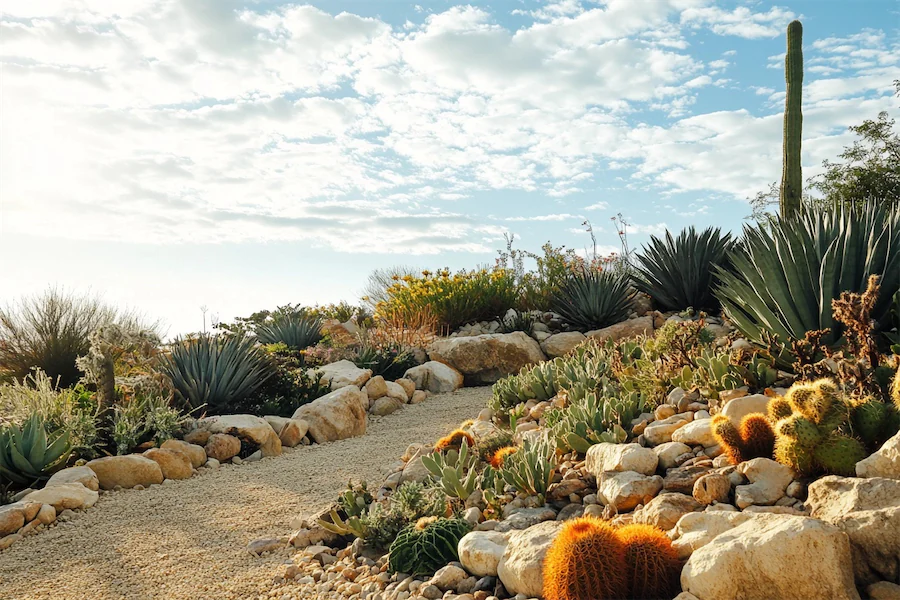A desert garden is a landscape designed to emulate the natural beauty of arid environments, focusing on drought-resistant plants and sustainable practices. This style not only conserves water but also creates a serene and low-maintenance outdoor space.
History and Origins of Desert Gardens
Desert gardens have been cultivated for centuries in arid regions, where water conservation is essential. Traditional desert dwellers developed these gardens to grow food and medicinal plants, utilizing techniques that maximized limited water resources. In contemporary landscape design, desert gardens have gained popularity for their sustainability and unique aesthetic appeal.
Key Features of Desert Gardens
Desert gardens are characterized by several distinctive elements:
- Drought-Tolerant Plants: Incorporating species such as cacti, succulents, agaves, and native desert plants like yuccas and aloes, which are adapted to survive with minimal water.
- Well-Draining Soil: Utilizing sandy or gravelly soils to prevent waterlogging and mimic natural desert conditions.
- Hardscaping Elements: Incorporating rocks, gravel, sand, or stone to create texture and reduce water usage, while adding visual interest.
- Minimalist Design: Emphasizing open spaces and a sparse arrangement of plants to reflect the expansive feel of desert landscapes.
Applications of Desert Gardens
Desert gardens are versatile and can be adapted to various settings:
- Residential Landscapes: Homeowners in arid regions can create sustainable and visually appealing yards that require minimal irrigation.
- Public Spaces: Parks and community areas can incorporate desert gardens to educate the public about native plants and water conservation.
- Botanical Gardens: Showcasing desert plants from around the world, these gardens serve as conservation and research centers.
Considerations When Creating a Desert Garden
When designing a desert garden, consider the following:
- Plant Selection: Choose plants that are native to desert environments or are well-adapted to dry conditions to ensure survival and reduce water needs.
- Soil Preparation: Amend the soil with sand, gravel, or pumice to enhance drainage and replicate natural desert conditions.
- Water Conservation: Implement efficient irrigation methods, such as drip systems, and consider rainwater harvesting to minimize water usage.
- Maintenance: Although desert gardens are low-maintenance, regular tasks like weeding, pruning, and monitoring for pests are necessary to keep the garden healthy.
Conclusion
Desert gardens offer a sustainable and aesthetically pleasing solution for landscaping in arid regions. By understanding their key features and design principles, you can create a tranquil oasis that harmonizes with the natural environment while conserving valuable water resources.
